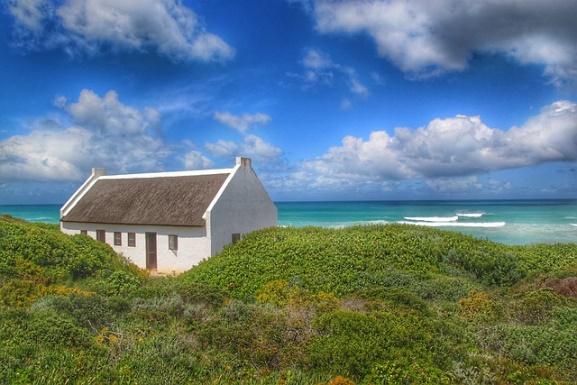There’s something incredibly appealing about stepping into a beach house, or even just a home designed to give off the vibe of one. As soon as you enter a property like this, you get to enjoy light, airiness, space, charm, a relaxed atmosphere, and a feeling of being at one with nature.
Whether you own a beach house that’s ready for some updates or simply want to turn your home in a landlocked area into one that makes you feel transported to the coast, there are some steps to take to get the vibe you’re after. Here’s how you can create a beach look in your property this year.
Design Around Views
If you have beautiful views of the ocean, a lake, inlet, or some other pretty vista, design your home’s interiors around it. When you have a coastal property, you want to make the most of the natural scenery nearby. Look for ways to frame the view with windows and furnishings. You’ll likely need to use low furniture in rooms with prominent views to avoid obstructions. Always compliment and frame the scenery rather than compete with it.
You might like to use some of the tones and colors evident in the view in your design choices. For example, select the bright blue of the ocean or the green of palm trees. If you prefer to stick with plainer colors, you can use the shades of the exterior surrounds in only your choice of accents, such as cushions, artworks, and rugs.
If your property is in a coastal area with a temperate climate, you’re going to want to spend as much time outdoors as you can. As such, design patios, decks, etc., in a way that gives you indoor-outdoor flow, with big glass sliding doors and stylings externally that align with what you choose indoors. It’s best to make spaces suitable year-round, so install outdoor ceiling fans and a tall umbrella or some screening to keep cooler in summer, and use patio heaters to help you stay cozy when the temperature drops.
Stick with Neutrals
Many designers recommend sticking with a fairly neutral color palette in coastal homes. Making this choice means the view can stay center stage, but that’s not the only reason to do so. A beachy home works because it has relaxing and refreshing vibes and conveys a feeling of lightness and airiness.
A light color palette helps to provide this. Crisp whites, calming creams, soft sands, cool grays, etc., form the basis of most coastal interior design backgrounds, where less is more.
Add Pops of Color
Don’t think you can’t enjoy pops of color in a coastal abode, too, though. Just like the beach and lakeside environments have some standout accent colors when you look around, such as bright pinks from coral or sunsets, green from foliage, and burnt orange from the sun, you can bring warmth to your home with striking, contemporary shades.
Add color with your choice of furnishings, textiles, and accessories. Don’t be afraid to bring in heavenly hues in bed linen, art, cushions, drapes, and area rugs. Designers often choose shades of blues and greens for beachy homes, plus pretty pastels, and earthy tones like brown and terracotta.
Select User-Friendly Materials and Products
Another element of coastal homes is that they have laid-back furnishings. When you’re living near a beach and trying to relax and enjoy yourself, you don’t want to constantly worry about keeping fabrics clean and free from sand, saltwater, and the like. Choose durable, user-friendly materials and products that handle traffic and even the elements well.
Steer clear of carpet and instead incorporate cool concrete flooring, light-hued hardwood boards, or other easy-care and visually appealing options. Well-worn dining tables and coffee tables cope well with coaster-free drinks or meals, while a weathered daybed with a machine-washable slipcover can lead to many contented lazy afternoons reading and napping.
Avoid suede, satin, velvet, and other fabrics you have to be very careful with and opt for textiles made from linen and cotton. Plus, wicker, rattan, and bamboo seats, benches, and other products tend to last. Keep your design choices casual and chill to evoke that feeling when you’re at the property. 
Other tips are to ensure there’s plenty of natural light in your beach pad, and choose soft, thin, drapes rather than anything too dark or heavy. Furthermore, create an open-plan layout that flows seamlessly and provides an airy atmosphere. Follow all these steps and, before you know it, you’ll have a beautifully designed beach pad you won’t want to leave.

